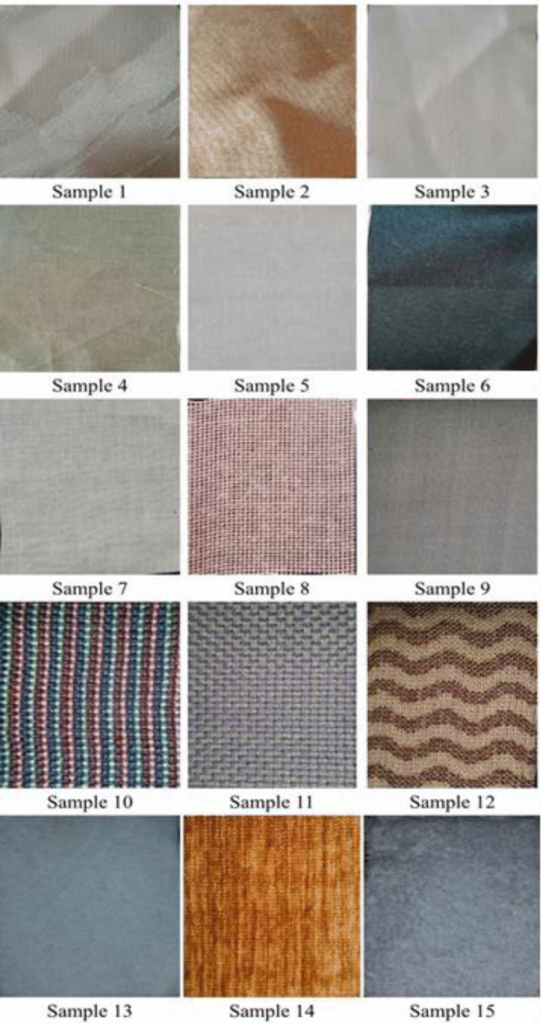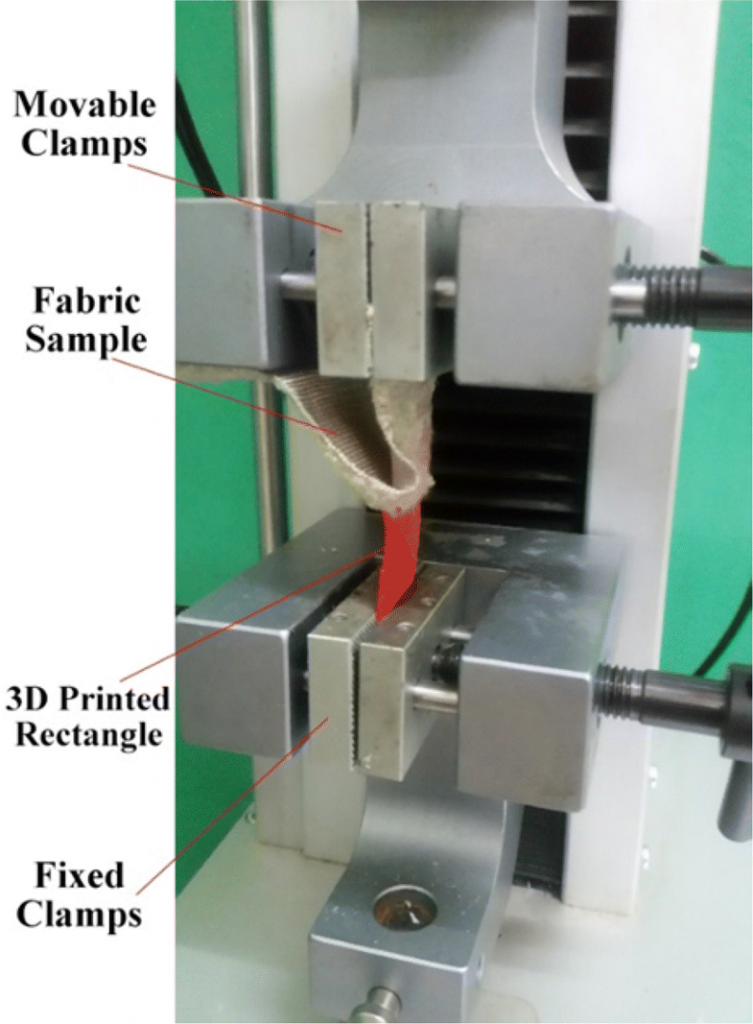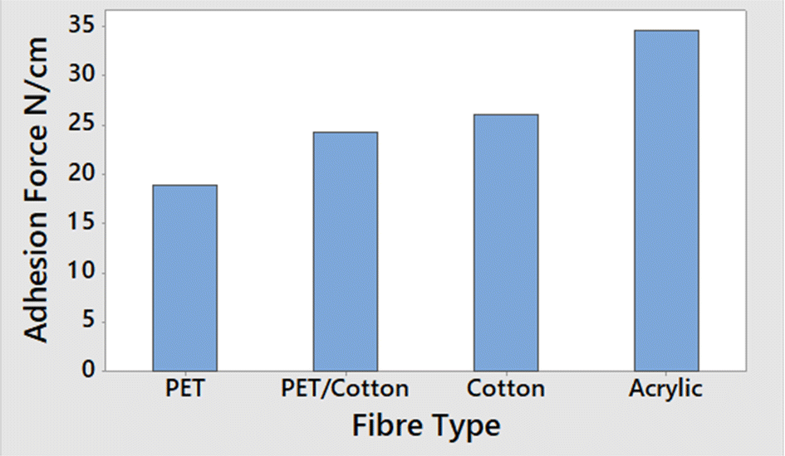Researchers from Kenya and Zimbabwe are tackling more complex 3D printing adhesion and material topics in their recently published, ‘Use of regression to study the effect of fabric parameters on the adhesion of 3D printed PLA polymer onto woven fabrics.’ Familiar with the benefits of 3D printing, and its potential for use with a wide range of materials and fabrics, authors Nonsikelelo Sheron Mpofu, Josphat Igadwa Mwasiagi, Londiwe C. Nkiwane, and David Njuguna experiment further with polylactic acid (PLA) polymer onto a variety of fabrics, including cotton, polyester, and acrylic.

PLA/cotton structure, a before cutting out the fabric parts around the composite and b prepared for loading on the tensile tester for adhesion tests
FDM 3D printing in textiles, while previously extended to the creation of fabric-polymer structures has given researchers challenge, mainly in adhesion due to surface texture. Improvement of such issues could open the door to a much wider range of fabric-polymer combinations. In this research, the scientists created 15 fabric samples, customized using SolidWorks, sliced with Cura, and then 3D printed with PLA. The team then tested the samples for the following:
- Fabric areal density according to ASTM D3776.
- Fabric ends/inch according to ASTM D3775.
- Fabric picks/inch according to ASTM D3775.
- Warp and weft count according to ASTM D1059-01.
- Fabric thickness according ASTM D1777.
- Fibre type according to American Association of Textile Chemists and Colourists (AATCC) 20.
Assessments were based on how texture felt to the human hand, whether smooth or rough, hard or smooth, stiff or limp. A panel of students was chosen to test the surfaces with their eyes covered to ensure judgment based purely on texture and not visuals. They were asked to grade the fabric on a scale on one to five, with one being smoothest and five being roughest.
The researchers noted average scores for the samples, documenting a clear effect on adhesion force. As all the properties being examined (fabric areal density, warp, and weft count, fabric thickness and fabric roughness) were increased, adhesion force increased too—with the opposite being noted for the ends/inch and picks/inch which were negatively correlated to adhesion force.
“Considering the fiber types used to manufacture the fabrics (acrylic, cotton, polyester/cotton blend and polyester), tests showed that the acrylic based fabrics displayed the highest adhesion force to PLA with polyester based fabrics showing the lowest adhesion force,” concluded the researchers.
While 3D printing and additive manufacturing processes have already offered enormous contributions to nearly every industry, refining the technology has become critical for many users—on all levels—from studying typical problems and making improvements in construction printing to experimenting with ultrasonic vibration, and creating other new filaments, along with using 3D printing materials in fashion, often as additional applications for accessories and items like handbags too.
What do you think of this news? Let us know your thoughts! Join the discussion of this and other 3D printing topics at 3DPrintBoard.com.

PLA/cotton structure, a before cutting out the fabric parts around the composite and b prepared for loading on the tensile tester for adhesion tests
Subscribe to Our Email Newsletter
Stay up-to-date on all the latest news from the 3D printing industry and receive information and offers from third party vendors.
You May Also Like
Further Understanding of 3D Printing Design at ADDITIV Design World
ADDITIV is back once again! This time, the virtual platform for additive manufacturing will be holding the first-ever edition of ADDITIV Design World on May 23rd from 9:00 AM –...
3D Printer Maker EVO-tech Reborn as NEVO3D — Once More With Feeling
EVO-tech was a 3D printing service and original equipment manufacturer established in 2013 and based in Schörfling am Attersee, Austria. The company produced high-quality material extrusion systems featuring linear bearings,...
3D Systems Brings 3D Printed PEEK Cranial Implant to the U.S. with FDA Clearance
For more than 10 years, 3D Systems (NYSE:DDD) has worked hand-in-hand with surgeons to plan over 150,000 patient-specific cases, and develop more than two million instruments and implants from its...
CDFAM Returns to Berlin for Second Annual Symposium
The second CDFAM Computational Design Symposium is scheduled for May 7-8, 2024, in Berlin, and will convene leading experts in computational design across all scales. Building upon the first event...

































